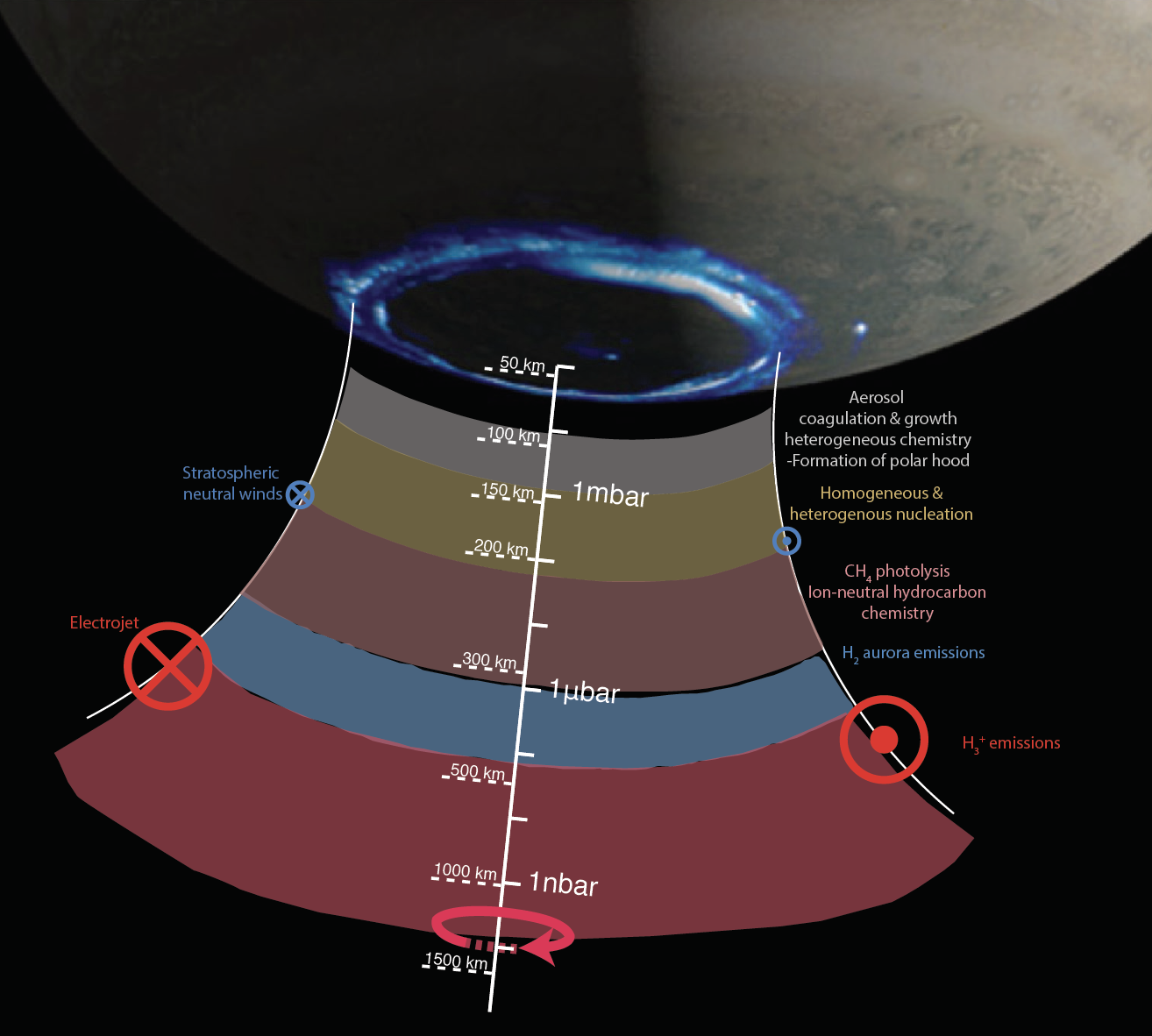- 1Aix-Marseille Université, CNRS, CNES, Institut Origines, LAM, Marseille, France.
- 2Laboratoire d’Astrophysique de Bordeaux, Univ. Bordeaux, CNRS, B18N, allée Geoffroy Saint-Hilaire, 33615 Pessac, France.
- 3LESIA, Observatoire de Paris, Université PSL, Sorbonne Université, Université Paris Cité, CNRS, 5 place Jules Janssen, 92195 Meudon, France
- 4Jet Propulsion Laboratory, California Institute of Technology, 4800 Oak Grove Dr, Pasadena, CA 91109, United States.
- 5Department of Earth and Planetary Sciences, University of California Santa Cruz, Santa Cruz, CA 95064, United States.
- 6Laboratory for Planetary and Atmospheric Physics, STAR Institute, University of Liege, Liege, Belgium.
- 7Space Science and Engineering Division, Southwest Research Institute, San Antonio, TX, USA.
- 8Department of Mathematics, Physics and Electrical Engineering, Northumbria University, Newcastle upon Tyne, UK.
- 9Department of Physics, Aberystwyth University, Ceredigion, UK.
- 10Escuela de Ingeniería de Bilbao, Universidad del País Vasco,UPV/EHU, Bilbao, Spain.
- 11Solar System Exploration Division, NASA Goddard Space Flight Center, Greenbelt, MD 20771, USA.
Jupiter's polar stratosphere exhibits unique chemical and dynamical processes that shape its atmospheric composition and structure. This paper reviews observational constraints and modeling efforts aimed at understanding the complex interplay between chemistry, dynamics, and aerosol microphysics in Jupiter's high-latitude regions.
Hydrocarbon observations from various instruments (e.g. Voyager/IRIS, Cassini/CIRS, IRTF/TEXES, Juno/UVS, and JWST/MIRI) have revealed significant abundance enhancements and latitudinal variations of species like acetylene (C2H2), ethylene (C2H4), ethane (C2H6), methylacetylene (CH3C2H), and benzene (C6H6) within the auroral regions. These enhancements are attributed to the influence of auroral processes and possible enhanced vertical mixing. IRTF/TEXES and JWST/MIRI also provided insights into the vertical structure of the polar atmosphere, suggesting that the methane homopause (i.e. the altitude where the methane molecular diffusion coefficient equals the vertical eddy diffusion one, and above which CH4 abundance decreases due to the molecular diffusion), is located at higher altitudes within the auroral regions compared to lower latitudes. Some of these observations also indicate that the aerosol layer is located at higher altitudes (above 20 mbar) in the polar regions compared to lower latitudes (around 50 mbar).
Modeling efforts have aimed to reproduce the observed meridional distributions of hydrocarbons and constrain the atmospheric dynamics and transport processes. 2D photochemical modeling, with parametrized meridional diffusion coefficients (Kyy) and advective circulation, suggests that a combination of moderate Kyy and a circulation cell with upwelling motions at the equator and downwelling motions at mid-latitudes is required to reproduce the observed meridional gradient of ethane (C2H6). Auroral chemistry models have explored the production of larger hydrocarbon ions and neutral species through ion-neutral reactions initiated by precipitating auroral particles, highlighting the potential role of auroral processes in the formation of stratospheric haze.
Cassini and ALMA observations of hydrogen cyanide (HCN) have revealed a striking enhancement and distinct vertical distribution within the auroral regions compared to lower latitudes, suggesting the influence of atmospheric dynamics on the chemical distributions. Measurements of the Doppler shifts in H3+ emission lines from ground-based telescopes, combined with measurements of wind-induced Doppler shifted HCN lines from ALMA, have revealed the presence of strong upper-atmospheric winds circulating around Jupiter's polar regions, possibly influencing the circulation down to the middle stratosphere.
Recent observations and modeling efforts have advanced our understanding of Jupiter's polar stratosphere. Key findings include the enhancement of hydrocarbon abundances within auroral regions, the higher altitude of the methane homopause and aerosol layers in polar regions, and the interplay between chemistry, dynamics, and aerosol microphysics in shaping the atmospheric composition and structure. We summarize the remaining outstanding questions that are to be addressed by current as well as forthcoming facilities and space missions.

Figure 1: Summary schematics of selected chemical distributions across Jupiter’s polar region. Particle precipitation leads to the formation of H3+ in the ionosphere, and to UV-auroras through the H and H2 emissions at the μbar level. Around the μbar level and below, solar-UV photolysis as well as charged particle precipitation leads to the formation of hydrocarbons. As hydrocarbons diffuse downward, they combine into heavier hydrocarbons and eventually form aerosols. HCN produced in the upper atmosphere, possibly from N2 destruction, becomes incorporated into aerosols before reaching ∼2mbar or below.
How to cite: Hue, V., Cavalié, T., Sinclair, J. A., Zhang, X., Benmahi, B., Rodríguez-Ovalle, P., Giles, R. S., Stallard, T. S., Johnson, R. E., Dobrijevic, M., Fouchet, T., Greathouse, T. K., Grodent, D. C., Hueso, R., Mousis, O., and Nixon, C. A.: The Polar Stratosphere of Jupiter, Europlanet Science Congress 2024, Berlin, Germany, 8–13 Sep 2024, EPSC2024-512, https://doi.org/10.5194/epsc2024-512, 2024.